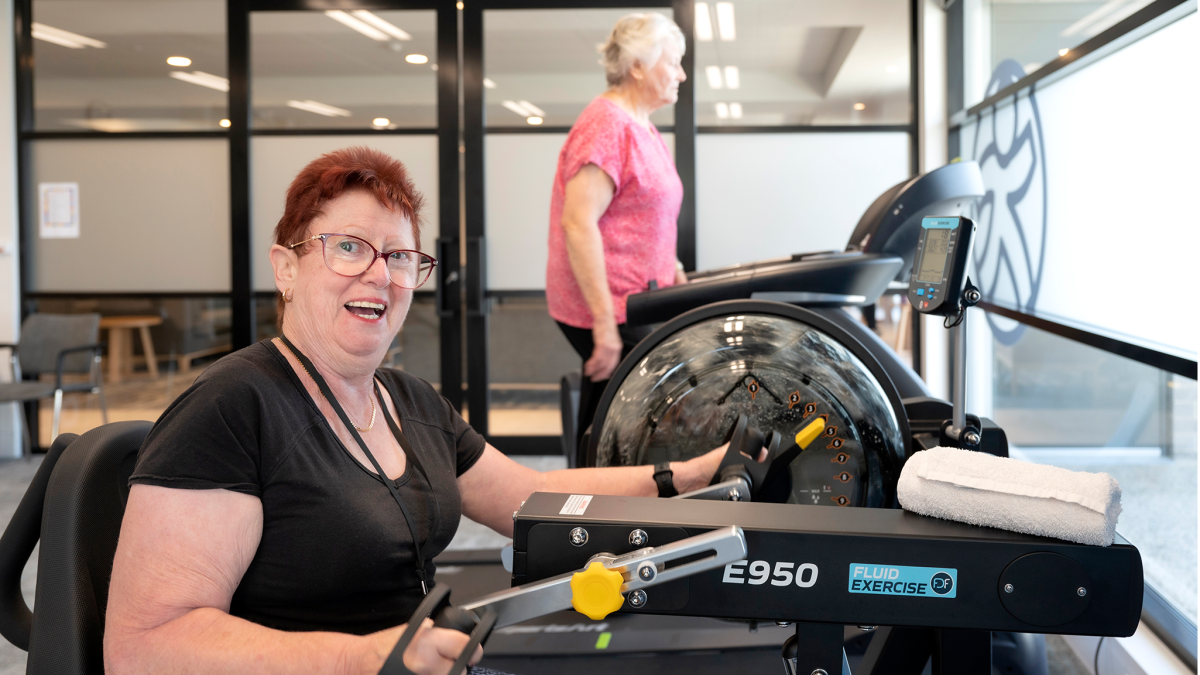What You Should Know About Stroke

Stroke affects many Australians every year and there are some key things you should know about the condition.
What is a stroke?
A stroke is a medical emergency caused by a sudden interruption in the blood supply to the brain, leading to brain damage.
In 2020, there were an estimated 31,794 new and recurrent strokes in Australia, or one stroke every 19 minutes. Approximately 65% of stroke survivors experience some form of disability, with many requiring ongoing care and support.
There are two main types of stroke:
-
Ischaemic Stroke
An Ischaemic Stroke (also known as a clot stroke) happens when an artery that supplies blood to a specific area of the brain is obstructed. The brain relies on a constant supply of oxygen and glucose from the blood, but if the blood flow is blocked, the affected part of the brain stops working correctly and the brain tissue starts to die.
If the blockage is not cleared, that part of the brain may die, resulting in a permanent loss of function and a scar in the brain. This is known as brain infarction. Ischaemic strokes happen over 5 times more frequently than haemorrhagic strokes.
-
Haemorrhagic Stroke
A Haemorrhagic Stroke (also known as a Cerebral Haemorrhage or bleed) happens when a blood vessel in the brain ruptures, either within the brain itself (intracerebral haemorrhage) or in the space surrounding it (subarachnoid haemorrhage). This rupture causes blood to spurt out of the artery and damage some of the soft brain tissue due to the additional pressure and swelling. Inflammation from the blood within the brain can also lead to further injury.
It can be challenging to distinguish between the two based on the symptoms alone as the presentation of both Ischaemic and Haemorrhagic stroke are similar.
What is a Transient Ischaemic Attack?
Transient Ischaemic Attack (TIA), also known as a mini-stroke, is a temporary disruption of blood flow to the brain that results in stroke-like symptoms but does not cause lasting damage to the brain. The symptoms of a TIA are similar to those of a stroke, but they usually last only a few minutes to a few hours and then disappear completely. About 1 in 3 people who have a TIA will go on to have a stroke, sometimes within the next few hours.
What are the risk factors?
High blood pressure is the most important modifiable risk factor for stroke, accounting for around 50% of all strokes. Other modifiable risk factors include smoking, physical inactivity, poor diet, high cholesterol, diabetes, and excessive alcohol consumption. Age, gender, family history, and some medical conditions also increase the risk of stroke.
Up to 80% of strokes can be prevented by addressing modifiable risk factors. In addition to making lifestyle changes, other prevention strategies include taking medications as prescribed, managing atrial fibrillation (an irregular heartbeat), and getting regular health check-ups.
What are the signs and symptoms?
The signs and symptoms of stroke depend on the part of the brain affected, but can include sudden weakness or numbness on one side of the body, difficulty speaking or understanding speech, sudden vision loss or blurred vision, severe headache, and dizziness or loss of balance.
The acronym FAST (Face, Arms, Speech, Time) can help you recognise the signs of stroke and act quickly to seek medical attention.
What does treatment look like?
Time is critical in treating stroke, as early treatment can minimise brain damage and improve outcomes.
Rehabilitation and ongoing support with Allied Health professionals like Physiotherapists, Occupational Therapists, Nurses and Social Workers are important for stroke survivors to access in order to regain function and improve quality of life.
Sources:
- https://brainfoundation.org.au/disorders/stroke/
- https://strokefoundation.org.au/about-stroke/learn/signs-of-stroke
- https://strokefoundation.org.au/media/ixgpi3ga/sf891_high-bp-fact-sheet_0422_v5-final.pdf
- https://www.healthdirect.gov.au/stroke
- https://austrokealliance.org.au/our-story/indigenous-stroke-inequity-a-way-forward/
- https://www.healthline.com/health/stroke
Share this article

